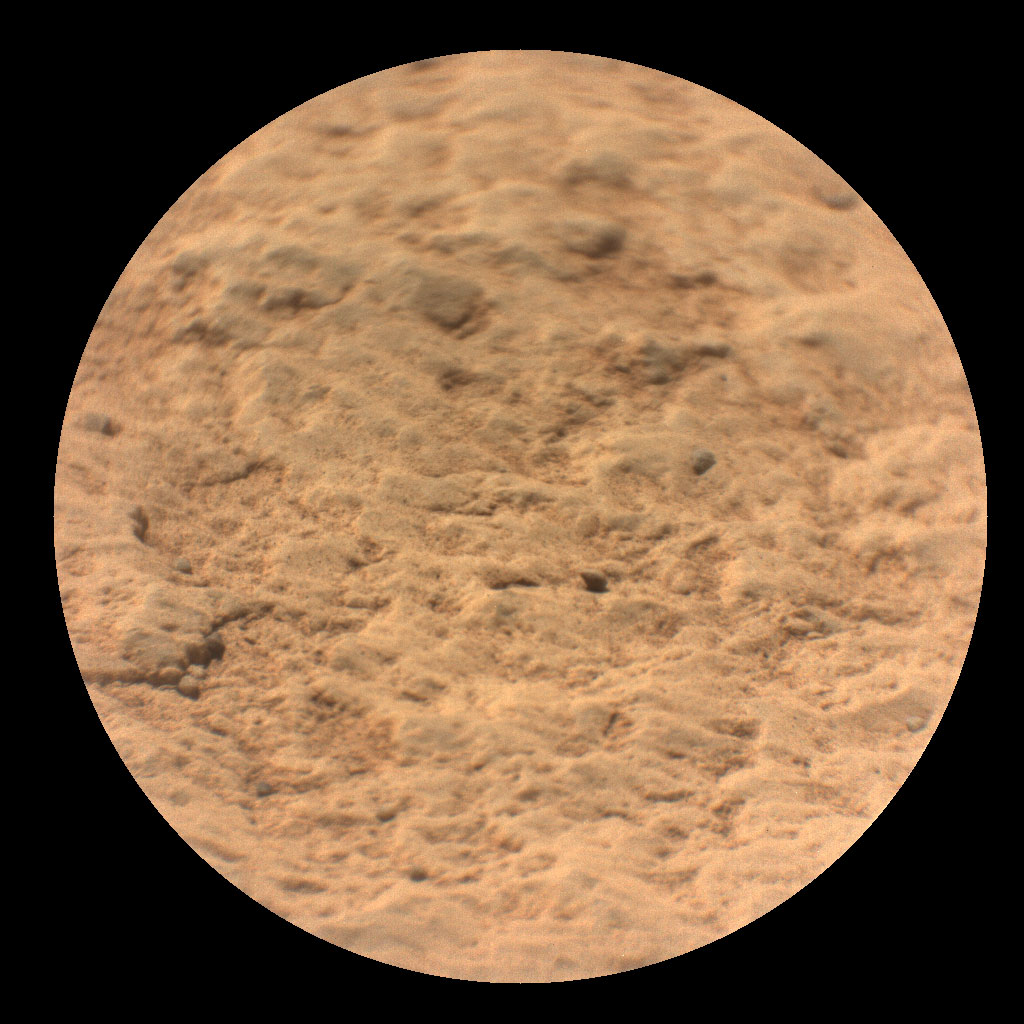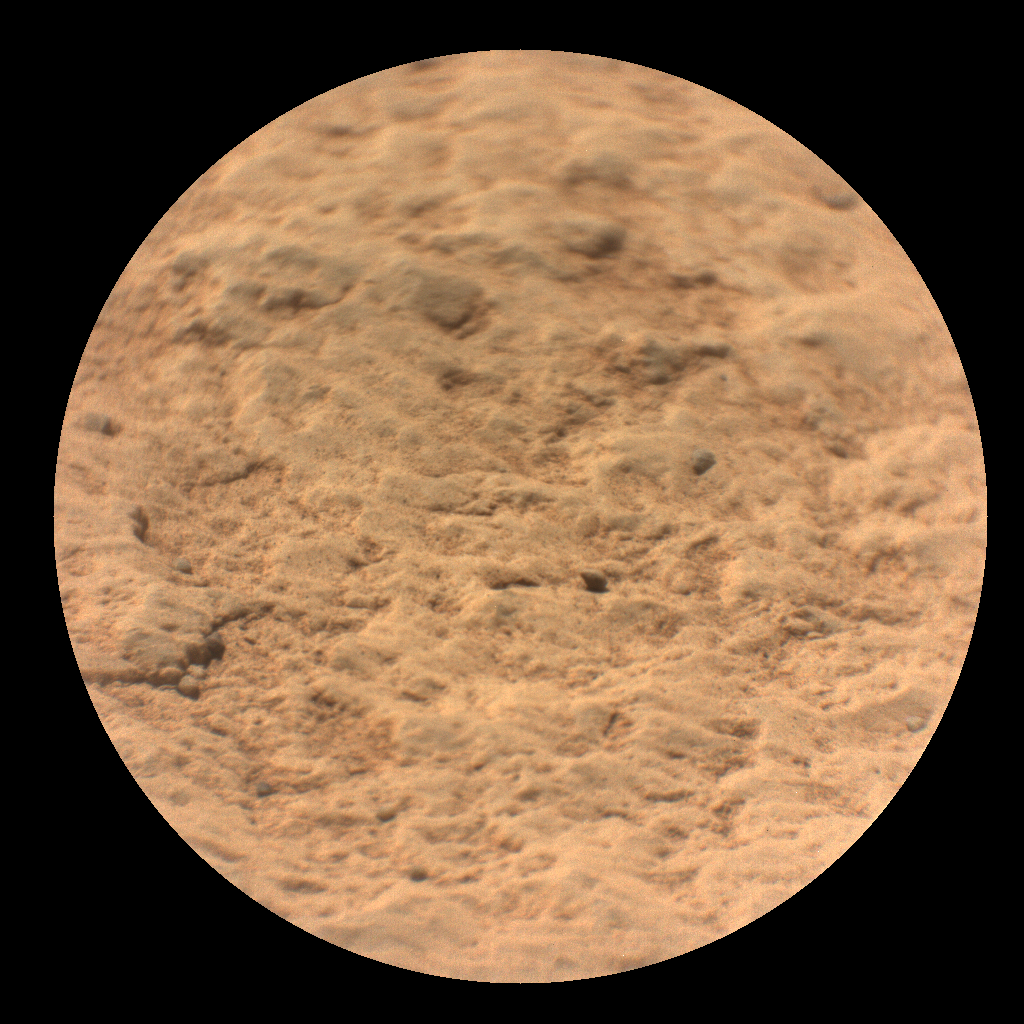SuperCam Close-Up of ‘Máaz’

| Credit | NASA/JPL-Caltech/LANL/CNES/CNRS |
|---|---|
| Language |
|
This image shows a close-up view of the rock target named “Máaz” from the SuperCam instrument on NASA’s Perseverance Mars rover. It was taken by SuperCam’s Remote Micro-Imager (RMI) on March 2, 2021 (the 12th Martian day, or sol,” Perseverance’s mission on Mars). “Máaz” means Mars in the Navajo language.
Analysis of SuperCam data shows that Máaz has a basaltic composition. It is either an igneous (in other words, volcanic) rock or consists of fine grains of igneous material that were cemented together in a watery environment. The target was 10.4 feet (3.17 meters) from the rover. The image field of view is 2.3 inches (6.0 centimeters) in diameter.
A key objective for Perseverance’s mission on Mars is astrobiology, including the search for signs of ancient microbial life. The rover will characterize the planet’s geology and past climate, pave the way for human exploration of the Red Planet, and be the first mission to collect and cache Martian rock and regolith (broken rock and dust).
Subsequent NASA missions, in cooperation with ESA (European Space Agency), would send spacecraft to Mars to collect these sealed samples from the surface and return them to Earth for in-depth analysis.
The Mars 2020 Perseverance mission is part of NASA’s Moon to Mars exploration approach, which includes Artemis missions to the Moon that will help prepare for human exploration of the Red Planet.
NASA’s Jet Propulsion Laboratory, which is managed for NASA by Caltech in Pasadena, California, built and manages operations of the Perseverance rover.
For more about Perseverance: mars.nasa.gov/mars2020/

